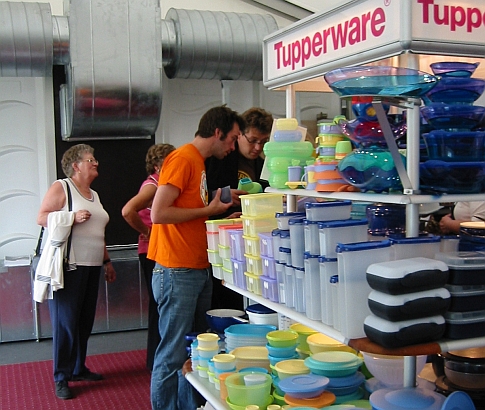

Dear EarthTalk: I’ve read that plastic bottles are not always safe to reuse over and over as harmful chemicals can leach out into the contents. I’m wondering if the same issues plague Tupperware and other similar plastic food storage containers. — Sylvie, Dawson City, Yukon, Canada
The recent hubbub over plastic containers leaching chemicals into food and drinks has cast a pall over all kinds of plastics that come into contact with what we ingest, whether deserved or not. Some conscientious consumers are forsaking all plastics entirely out of health concerns. But while it is true that exposure to certain chemicals found in some plastics has been linked to various human health problems (especially certain types of cancer and reproductive disorders), only a small percentage of plastics contain them.
According to The Green Guide, a website and magazine devoted to greener living and owned by the National Geographic Society, the safest plastics for repeated use in storing food are made from high-density polyethylene (HDPE, or plastic #2), low-density polyethylene (LDPE, or plastic #4) and polypropylene (PP, or plastic #5). Most Tupperware products are made of LDPE or PP, and as such are considered safe for repeated use storing food items and cycling through the dishwasher. Most food storage products from Glad, Hefty, Ziploc and Saran also pass The Green Guide’s muster for health safety.
But consumers should be aware of more than just a few “safe” brands, as most companies make several product lines featuring different types of plastics. While the vast majority of Tupperware products are considered safe, for example, some of its food storage containers use polycarbonate (plastic #7), which has been shown to leach the harmful hormone-disrupting chemical Bisphenol A (BPA) into food items after repeated uses. Consumers concerned about such risks might want to avoid the following polycarbonate-based Tupperware products: the Rock ‘N Serve microwave line, the Meals-in-Minutes Microsteamer, the “Elegant” Serving Line, the TupperCare baby bottle, the Pizza Keep’ N Heat container, and the Table Collection (the last three are no longer made but might still be kicking around your kitchen).
Beyond BPA, other chemicals can be found in various food storage containers. Containers made out of polyethylene terephthalate (PET or PETE, or plastic #1)—such as most soda bottles—are OK to use once, but can leach carcinogenic, hormone-disrupting phthalates when used over and over again. Also, many deli items come wrapped in plastic made from polyvinyl chloride (PVC, or plastic #3), which can leach cancer-causing dioxins. Swapping foods out of such wraps once the groceries are at home is advisable.
Containers made of polystyrene (PS, or plastic #6, also known as Styrofoam) can also be dangerous, as its base component, styrene, has been associated with skin, eye and respiratory irritation, depression, fatigue, compromised kidney function, and central nervous system damage. Take-out restaurant orders often come in polystyrene containers, which also should be emptied into safer containers once you get them home.
If your head is spinning and you can’t bear to examine the bottom of yet another plastic food storage container for its recycling number, go with glass. Pyrex, for instance, does not contain chemicals that can leach into food. Of course, such items can break into glass shards if dropped. But most consumers would gladly trade the risk of chemical contamination for the risk of breakage any day.
GOT AN ENVIRONMENTAL QUESTION? Send it to: EarthTalk, c/o E – The Environmental Magazine, P.O. Box 5098, Westport, CT 06881 USA; submit it at: www.emagazine.com/earthtalk/thisweek; or email: earthtalk@emagazine.com. Read past columns at: www.emagazine.com/earthtalk/archives.php.
